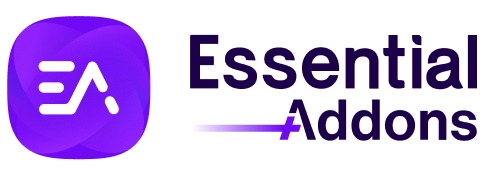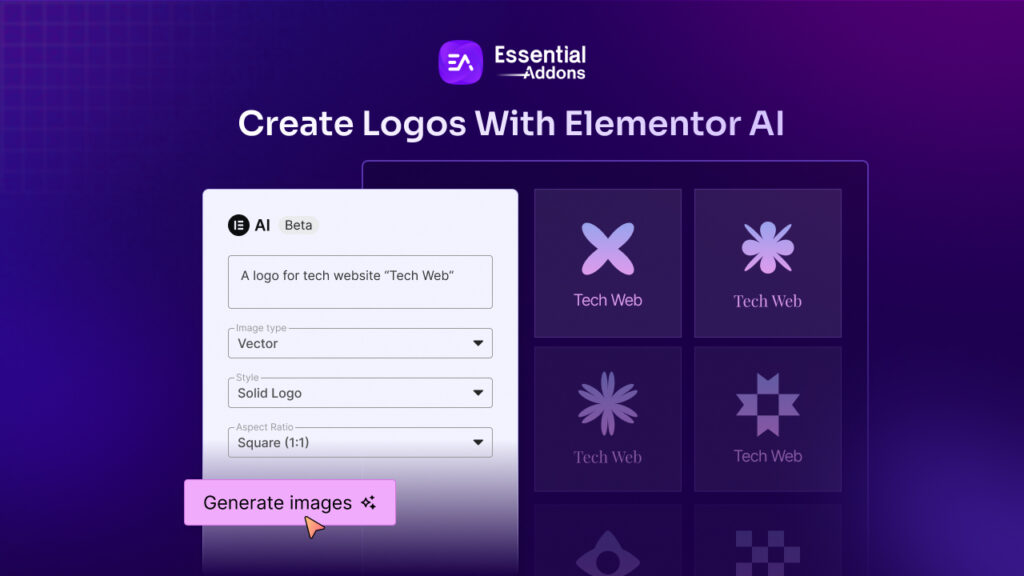Your website is the first point of contact between your business and potential customers. It is not just a platform; it is a pivotal part of your branding, marketing, and customer service strategy. That is why kicking off any website project with a clear, comprehensive website design brief is essential. Think of the brief as the foundation of a building. Without a solid foundation, the structure will not stand tall. It sets the stage for what you aim to achieve, ensuring everyone involved is aligned with your vision, goals, and expectations.
![How to Write a Website Design Brief [Bonus Template Included] 1 Website design brief](https://essential-addons.com/wp-content/uploads/2024/03/image-7.jpeg)
By taking the time to develop a detailed brief for website design, you are not just providing instructions; you are laying down the path to a successful project outcome. So, how do you write a website design brief that is both informative and inspiring? This guide will walk you through each step, ensuring that by the end, you will be equipped to draft a document that leads to the website of your dreams.
What is Website Design Brief
A website design brief is like a blueprint for your dream home, but instead of bricks and mortar, you are working with pixels and creative ideas. It is a comprehensive document that is provided by a client to the designers that outlines the essential objectives, requirements, and visions for a website project. It serves as a guiding tool for both parties, ensuring that everyone involved has a clear understanding of the project’s goals, scope, timeline, target audience, and specific features desired. The brief for website design acts as a reference point throughout the project, helping to keep the design and development process aligned with the client’s expectations and needs.
✍️ How to Write a Website Design Brief?
A well-crafted website design brief helps streamline the design process, minimize misunderstandings, and effectively communicate your needs to the design team. It’s a tool that bridges the gap between your business objectives and the creative execution needed to meet those objectives. Let us know in detail how you can write a design brief that can meet your necessities below:
▶️ Understanding Your Goals to Write a Website Design Brief
The first step in writing your website design brief is to be crystal clear about your website’s purpose. Ask yourself, “What do I want to achieve with my website?” The answer could range from selling products online, generating leads, educating your audience, or even establishing your brand’s online presence. This purpose will be the guiding star for the entire project, influencing design decisions, content strategy, and functionality.
▶️ Setting SMART Objectives
With a clear purpose in mind, it is time to set specific objectives for your website. These should be SMART: Specific, Measurable, Achievable, Relevant, and Time-bound. For instance, if your website’s purpose is to generate leads, a SMART objective might be to “increase lead generation by 30% within the next six months through an enhanced user interface and engaging content”. Setting SMART objectives provides a clear target for the project and a way to measure success. If we elaborate SMART objective a little bit, then it would be like this:
⭐ Specific: Your goals should be clear and specific, avoiding any ambiguity about what is to be achieved.
⭐ Measurable: There should be a tangible way to measure progress towards the achievement of the goal.
⭐ Achievable: While goals should be challenging, they must also be attainable.
⭐ Relevant: Ensure your objectives align with your broader business goals and add value.
⭐ Time-bound: Assign a deadline to each goal to encourage focus and prioritization.
This design brief for a website will inform the design team about what the website must achieve, guiding design choices and functionalities. Whether your aim is to enhance brand awareness, drive sales, or educate your audience, your objectives will shape the project’s direction from the outset.
▶️Defining Audience of Your Website
Understanding your audience is very important before you make a website. Your target audience will significantly influence your design decisions, from the website’s overall look and feel to the content and user journey. Here is how to get a grip on your audience:
⭐ Research Target Audience: Start with demographic information like age, gender, location, and income level. Then, dive deeper into psychographics, including interests, challenges, values, and online behaviors. Tools like surveys, social media analytics, and customer interviews can provide valuable insights.
⭐ Create Audience Personas: Based on your research, create 2-3 detailed personas representing your website’s primary users. Include their goals, challenges, and how your website can help them. Personas make it easier to tailor the design and content to match your audience’s needs.
⭐ Consider User Needs and Preferences: Different audiences will have varying expectations for your website. A younger demographic might prefer a modern, vibrant design with interactive elements, while a more professional audience could value simplicity and straightforward navigation. Keep these preferences in mind as you plan your website’s design. Consider text sizes, color contrasts, and navigation ease to cater to all users.
▶️ Doing an In-Depth Competitor Analysis
The competitive landscape is essential to understand for carving out your unique space in the digital world. A thorough competitor analysis helps you identify what’s working (or not) for others in your industry and how you can differentiate your website. Let us know some key points to follow:
⭐ Identify Your Competitors: Start with 3-5 main competitors. These can be direct competitors within the same industry or indirect competitors that share a target audience.
⭐ Evaluate Their Websites: Look at their website design, user experience, content, features, and functionalities. Note what you like and dislike, and consider how their approach aligns with audience expectations.
⭐ Identify Opportunities: Based on your analysis, pinpoint areas where your competitors are lacking and where you can excel. This could be anything from offering a more engaging user experience, better content, unique features, or a more appealing design.
⭐ SWOT Analysis: Conduct a SWOT analysis (Strengths, Weaknesses, Opportunities, Threats) for your own website concept in relation to your competitors. This will help you strategize effectively, leveraging your strengths and opportunities while addressing any weaknesses and threats.
▶️ Website Structure and Content
Now that you have a solid understanding of your goals, audience, and competitive landscape, it is time to plan the structure and content of your website. This is where you start bringing your vision to life, ensuring that the site will serve your business and user needs effectively.
You can begin with a basic sitemap outlining the main pages your website will have. This includes home, about us, services or products, blog, contact, and any other essential sections. Think about the user journey, ensuring that navigation is intuitive and that users can easily find what they are looking for.
▶️ Design Preferences
Your design preferences set the tone for the visual aspect of your website, aligning it with your brand identity and making it appealing to your target audience. Here is how to articulate your design preferences in your brief:
![How to Write a Website Design Brief [Bonus Template Included] 2 Updating website designs right practices](https://essential-addons.com/wp-content/uploads/2024/03/image-3-1.jpeg)
⭐ Visual Style and Branding: Describe the desired look and feel of your website. Do you prefer a modern and minimalist design or a vibrant and eclectic style? Include details about your brand colors, typography, and any other visual elements that are important to your brand identity.
⭐ Inspiration: Provide examples of websites you admire, noting specific features or design elements you find appealing. This can include competitors’ websites but also sites from different industries that inspire you.
⭐ Dislikes: Equally important is to mention design elements or trends you want to avoid. This could be certain color schemes, types of imagery, or any website features you find off-putting.
⭐ Branding Materials: If you have existing branding materials like logos, color palettes, or style guides, include these in your brief for website design. They will ensure the design team can maintain consistency with your current brand identity.
▶️ List Down Important Functionality and Features
A website’s functionality and the features it offers are important for user experience. To make its functionality better, you need to define them so that it meets its objectives and serves your audience effectively. The below list will help you make the lists of features and functionalities that you want in your website:
⭐ Essential Features: List the must-have features for your website, such as a contact form, online store, booking system, or blog. Prioritize these features based on your objectives and user needs.
⭐ User Experience (UX) Considerations: Highlight any specific UX elements that are important for your website, such as fast loading times, mobile responsiveness, or easy navigation. A good UX is essential for keeping visitors on your site and encouraging them to take action.
⭐ Interactive Elements: If interactive elements like quizzes, polls, or animations are relevant to your audience and objectives, mention these in your brief. Interactivity can increase engagement and provide valuable insights into your audience’s preferences.
⭐ Technical Requirements: Note any specific technical requirements or integrations needed, such as e-commerce platforms, CRM systems, or social media feeds. This ensures the design team can accommodate these elements from the start.
▶️ Set a Web Design Budget and Timeline
Setting realistic expectations for your project’s budget and timeline is important for a smooth design process. Be upfront about your budget constraints and desired timelines to find a suitable design solution within those parameters.
⭐ Budget: Provide a range for your budget, allowing some flexibility for unforeseen expenses or opportunities to enhance the project. Being transparent about your budget helps the design team propose solutions that align with your financial constraints.
⭐ Timeline: Outline key milestones and deadlines for your project, including the desired launch date. Consider any external factors that might influence the timeline, such as marketing campaigns or seasonal trends.
💡Bonus Template of Website Design Brief
Now, you know the elements to include in a website design template. You can create a website brief template without facing any complications. To help you get started, we have made a basic template to write a design brief for the website:
![How to Write a Website Design Brief [Bonus Template Included] 3 Website design brief questionnaire](https://essential-addons.com/wp-content/uploads/2024/03/image-3-1-2.jpeg)
🔆 Project Overview:
- Project Name: [ Name of your project]
- Company/Organization:[Name of your company or organization ]
- Project Summary: [A short paragraph summarizing the project.]
- Target Launch Date: [DD/MM/YYYY]
🔆 Objectives:
👉 [Objective 1]
👉 [Objective 2]
👉 [Objective 3]
🔆 Target Audience: [A brief description of the target audience.]
🔆 Branding Guidelines:
- Logo: [Include logo usage guidelines, or attach files.]
- Color Scheme: [Preferred colors and any required color codes.]
- Typography: [Preferred fonts for headings, subheadings, and body text.]
🔆 Website Structure:
- Sitemap: [A basic sitemap or list of the main sections/pages.]
- Content: [Brief description of content types, e.g., text, images, video.]
🔆 Features and Functionality:
👉[Feature 1: Description]
👉[Feature 2: Description]
👉[Feature 3: Description]
🔆 Competitor Analysis:
👉[Competitor 1: What you like/dislike]
👉[Competitor 2: What you like/dislike]
👉[Competitor 3: What you like/dislike]
🔆 Design Preferences: [A brief description of design preferences.]
🔆 Budget: [Budget range or specific amount.]
Consider Templately to Create a Stunning Website
Now you already know how to write a design brief and you also got a bonus template to make a website design brief. It might be a daunting task for you to go through this complex path, right? There is an easy way to create your website in a few clicks. You can try out exclusive ready templates which will let you visualize what elements you want to keep in your site and where to place them. Here comes Templately, the ultimate templates cloud for Gutenberg and Elementor.
![How to Write a Website Design Brief [Bonus Template Included] 4 How to Write a Website Design Brief [Bonus Template Included] 1](https://essential-addons.com/wp-content/uploads/2024/03/image-10.png)
Templately is a huge library of WordPress templates where you will get a bunch of stunning website template packs. Here you will get 5,000+ different templates for types of businesses, stores, and organizations. With just a few clicks, Templately can help you to create a website for any niche. It can save a lot of time, and you do not need to go through the complex work of making a website with countless lines of code. Even if you do not know a line of code, you can still create a beautiful website that can attract your customers or visitors.
Here are a few features of templately ready templates:
🔆 Get 5000+ ready templates
🔆 Available templates for both Gutenberg and Elementor editor
🔆 Save your designs in the Cloud
🔆 Work with your team from the ‘Templately Workspace’
Elevate Your Web Design with a Proper Design Brief
A website design brief serves as the blueprint for your project, guiding your design team through your vision, goals, and requirements. This document is important for aligning expectations, setting clear objectives, and ensuring a smooth design process as well. A well-crafted brief can save time, reduce revisions, and result in a website that effectively meets your business needs. Remember, the more detailed and clear your brief, the smoother the design process will be. Now that you have this guide to write a design brief and a bonus website brief template, you can start drafting your website design brief.
If you have found this blog helpful, feel free to share your opinion and feedback on how you would agree or disagree with our Facebook community. You can also choose to subscribe to our blogs for valuable tutorials, guides, knowledge, tips, and the latest WordPress website updates.








